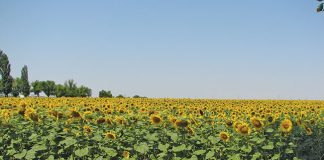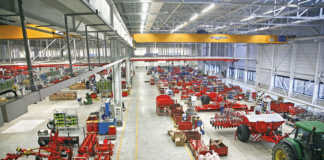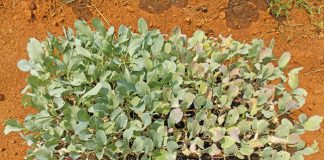
Winter can create challenges for cattle and fruit trees in summer rainfall areas. It’s important to care for your livestock and trees in good time, before any real issues develop.
Cattle
Lice infestations can become a problem for cattle in winter. You should therefore dip your cattle as a preventative measure. Another challenge in winter is that the nutritional value of grazing can drop quite dramatically. This appears to be worse with sweetveld, where there is often winter frost, and grassy plants go into dormancy and become very dry.
Essentially, the grass has a higher roughage content and this affects the condition of livestock feeding on it. The answer is to provide a lick for the cattle. The mix I’ve found best for the transition from green, succulent grass to dry, dormant grass contains urea, which enables cattle to utilise dry matter more effectively. The mixture also contains NPN (a type of synthetic protein) and other important trace elements such as calcium and phosphorus.
Never allow products or feed troughs containing urea or NPN-based products to accumulate water. This can be dangerous to livestock as it can result in poisoning.I use the following mix (barring the salt, the ingredients are manufactured by Voermol, but other feed manufacturers may make similar products):
- 1 x 50kg bag of coarse salt;
- 1 x 50kg bag of Dundee lick concentrate;
- 1 x 50kg bag of Rumevite 12P.
Mix these ingredients thoroughly on a clean surface. Store the bags of lick in a clean, dry and shady space. Cattle will consume between 200g and 300g of this supplement daily, so if you have, for example, 10 animals, the 150kg of lick will carry them through almost three months of winter.
Remember that this is not a complete ration; it merely acts as a supplement. Cattle given this lick should at all times have access to dry roughage in the form of grass or hay.
Livestock that doesn’t have enough roughage or access to sufficient grass may overfeed on supplements and this can lead to problems such as salt-poisoning. Consider adding extra roughage, such as teff or lucerne bales, in troughs in your overnight kraaling area.
Fruit trees
High rainfall in summer can lead to high humidity levels, and this can result in fungal or bacterial infections on the leaves of fruit trees. These diseases can interfere with a tree’s fruit-bearing capabilities, and even kill the tree.
The transition period between autumn and winter, when most fruit trees enter a state of dormancy, is a good time to spray the trees with a product such as copper sulphate, which is a highly effective bactericide and fungicide. Spray on cooler days, as hot days can result in over-absorption and hence leaf damage. Try to spray only the affected leaves.
Before spraying, spray just one tree to test its reaction to copper sulphate. This will be evident in about three days.
Spraying technique
While wearing protective gloves, protective clothing and a face cover with goggles, mix 10g of copper sulphate powder into 10ℓ of water.
If there’s a breeze, make sure it’s coming from behind you so that overspray doesn’t blow onto you. Spraying should take place only in winter and on cooler days. Spray twice, once in early winter and again in late winter. Avoid spraying on days when rain seems imminent.
If you don’t feel confident about mixing your own copper sulphate spray, buy a spray from a nursery or other supplier.
Fertiliser
In my experience, kraal manure is an excellent natural fertiliser for fruit trees. Place the manure into a 200ℓ-drum or old tank and add water over a week or two, allowing the manure to dissolve.
Water your fruit trees with this mixture, which will be dark brown in colour. I’ve found that it helps ensure good-quality fruit.
Add to trees once or twice in winter and, ideally, at least once a month in summer.
In farming in general, a proactive approach is better than a reactive one. When issues arise, fix them without delay before they become costly and ongoing problems.
Shane Brody is involved in an outreach programme aimed at transferring skills to communal farmers.










